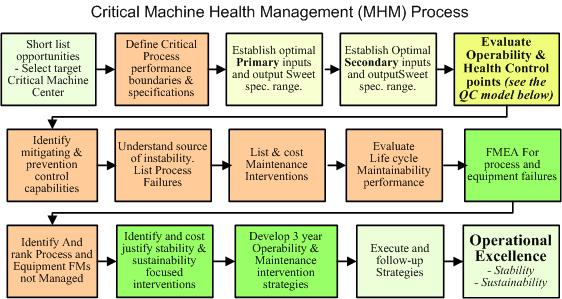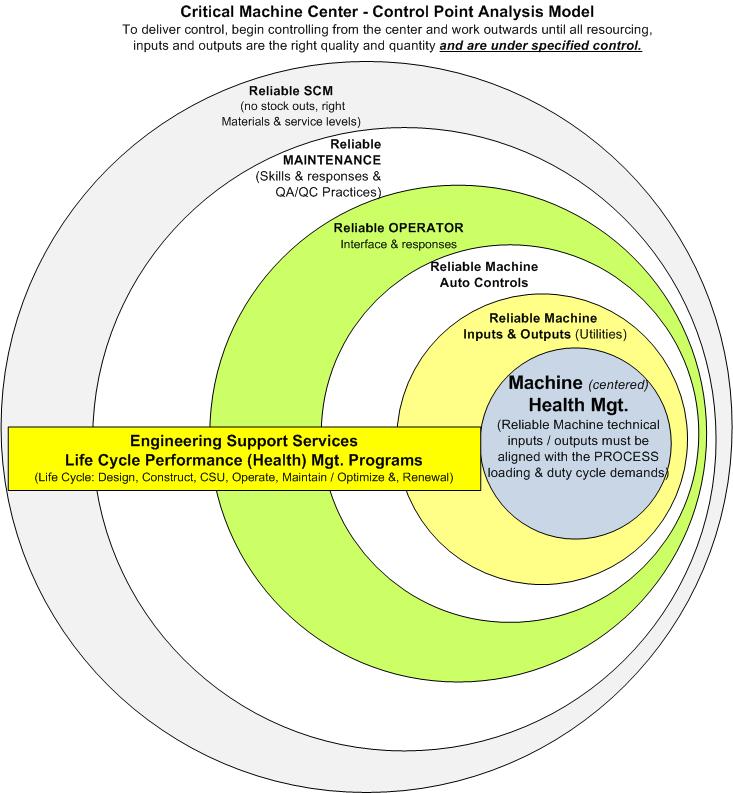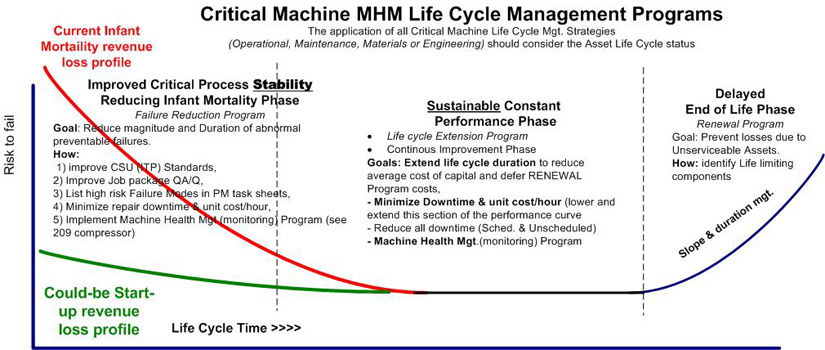Technical Consulting Services
- Operational Excellence
- Quality Inspection and Consulting Services
- Audit Services
- Industrial Warehouse Optimization Services
- Reliability Excellence
- Commissioning Technical Support Services
- Shutdown Management
- Predictive Maintenance Optimization
- Preventative Maintenance (PM) Optimization
- Maintenance Cost Reduction
- Machine Health Management
- CMMS Selection
- CMMS Super User
Critical Machine Health Management
Achieving Operational Excellence requires implementing critical Machine Health Management (MHM) practices. Why? Because critical plant processes cannot operate without top quartile output performance from the critical machine centers.
The MHM process is proven to embed advanced, sustainable life cycle performance of Critical Machine Centers.
MHM is a high impact, practical performance improvement process that primarily targets:
1. Enhanced operability for increased stability and output optimization
2. Enhanced process and machine reliability engineering for output
optimization, improved control and durability
3. Enhanced maintainability to ensure sustainability
4. Increased understanding and sense of ownership of the
‘Critical Machine Centers’ performance and control by Operations
The initial focus during the application of the MHM process is problematic critical equipment, in order to rapidly increase uptime and
improve operational stability. The second focus, after stability, should be to deliver improved output in a sustainable manner.
The optimal MHM process and implementation tool kit requires planning based on practical field experience. Our implementation approach
(timing and tools used) always focuses on adapting to your teams’ specific goals, existing improvement activities and available resources.
Carvers’ practical implementation program, complete with a documented Facilitation Guide or ‘procedural cook-book’ is available to ensure your teams’ execution
of the program is low cost and sustainable. While utilizing Carvers’ field coaching Facilitation Guide and working alongside one of our MHM Specialists, the user
evaluates and applies all aspects of the machine management strategy.
The following flow chart is an overview of the MHM process implementation steps. Each step requires both field facilitation experience and
subject matter expertise or you risk not capturing the maximum benefits of this program. One of our experienced Field Facilitation Coaches will be pleased to
answer any questions you have on the benefits and challenges of implementing an MHM program.
Please contact Carver today to discuss any questions you may have.

(Click On Images To Enlarge)
The following graphic is to be used as a check list /reference tool for identifying key control point options. Choose a critical piece
of equipment and review its current `control strategies` using the following graphic as a reference tool.
1. How stable is the machines’ performance? How is stability defined? What failure modes and control systems ensure STABILITY?
2. What are the quality control points of the critical resource inputs?
3. What are the control strengths and weaknesses?
4. What failure modes and control systems ensure SUSTAINABLE output?
MHM Performance Control focus points:
The MHM process addresses the effectiveness of the following using an integrated analysis process.
1. Man-Machine interface performance – Operations & Maintenance
2. Automated – Process Status vs. Design Control algorithms
3. Safety & Environmental control philosophies and field controls
4. Critical Machine Maintainability and interface with maintenance
5. Production Quality and Cost Control philosophies and programs
6. Reliability Block Diagrams and % Availability reporting.

(Click On Images To Enlarge)
The MHM process improves all aspects of the Machines Life Cycle performance.
Every budgeted Maintenance or Operations improvement program should have specific goals, (e.g. improve production stability or sustainability,
lower unit cost of production, etc.). Begin reviewing the current maintenance strategies with your Maintenance department and subsequently examine
the following Life Cycle Optimization model. Compare and evaluate which life cycle phase your current operation would benefit from.
Contact Carver for information on how you can achieve these benefits.

(Click On Images To Enlarge)


